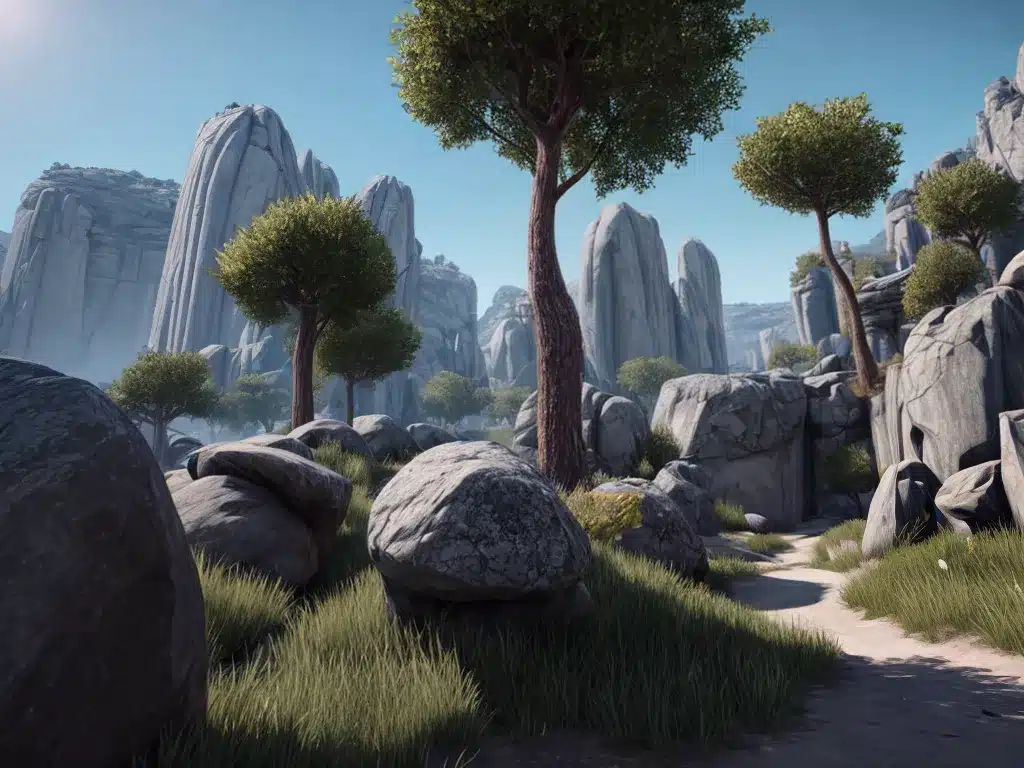Introduction
Unity’s new 2024 release brings a major graphics overhaul with photorealistic rendering capabilities. As a game developer using Unity, I’m excited to leverage these new features to create incredibly realistic looking games. In this article, I’ll provide an in-depth look at what photorealism means for Unity and game development.
What is Photorealism?
Photorealism refers to computer graphics that are indistinguishable from real world photography. It means that the graphics are so realistic, they look like actual photos. This is achieved through advanced rendering techniques that accurately simulate the physical properties of light, materials and camera optics.
Some key qualities of photorealistic graphics include:
- Precise lighting effects like global illumination, accurate shadows and reflections
- Detailed and authentic looking materials and textures
- Realistic shaders that mimic actual surface properties
- Lifelike animations and motion blurring
- Depth of field, lens flares and other camera effects
In essence, photorealism aims to recreate the complexity of light behavior and visual perception that we experience in the real world.
Photorealism in Unity 2024
Unity’s new 2024 release introduces the Unity Photoreal Render Pipeline (PRRP). This is a new high-fidelity rendering pipeline designed specifically to achieve photoreal visuals.
Here are some of the major photorealism features added in Unity 2024:
Physically Based Ray Tracing
This uses ray tracing technology to accurately simulate real-time global illumination effects like reflections, refractions and shadows. Ray tracing mimics real light behavior by tracing individual light rays as they interact with virtual objects.
Photorealistic Materials
The new Unity MaterialX workflow allows creating complex photoreal materials with multilayered textures and precise shader properties. Materials can simulate real-world surfaces down to fine details.
AI-Powered Upscaling
Unity’s AI temporal upscaling enables rendering games at very high resolutions like 8K while minimizing performance overhead. This level of detail is critical for photorealism.
True-To-Life Lighting
Advanced lighting systems like path tracing, volumetric fog and light probes help replicate nuanced light phenomena for authentic indoor and outdoor environments.
Lifelike Characters and Animation
New tools for high-fidelity character rendering, facial animation and motion capturing allow for extremely realistic animated human models.
Benefits of Photorealistic Graphics
The jump to photorealism in Unity 2024 brings some major benefits:
-
More Immersion – The enhanced realism allows players to get completely immersed in game worlds.
-
Scope for Innovation – Photoreal graphics open possibilities for developing incredibly life-like games, VR experiences and simulations.
-
Emotionally Resonant – Subtle details in expressions, animations and environments can convey emotions and connections better.
-
Competitive Edge – Next-gen photoreal graphics will become expected in coming years. Early adopters have an advantage.
-
Mainstream Appeal – Hyper-realistic graphics have mass market appeal and can help attract casual gamers.
Challenges of Implementing Photorealism
However, there are some key challenges to implementing photorealistic graphics:
-
Performance – Ray tracing and advanced rendering is very resource intensive. Games need optimized, high spec hardware to run smoothly.
-
Expertise – Artists and developers need strong technical skills to leverage the new tools effectively. Photorealism has a steep learning curve.
-
Development Time – Hyper-realistic art assets take much longer to create. Photorealism lengthens the development cycle.
-
Uncanny Valley – If not done properly, human models can end up looking creepy and unnatural. This needs to be avoided.
-
Stylization vs Realism – Some games purposefully use stylized graphics for artistic reasons. Photorealism may not always be suitable.
The Future of Photorealism in Gaming
Unity’s 2024 release paves the way for a huge leap in realism for games, VR and other real-time 3D content. Some predictions regarding the future of gaming photorealism:
-
Photorealism will become standard for high budget AAA games within 3-4 years.
-
Mobile gaming will achieve limited photorealism in the 2025-26 timeframe as mobile chipsets improve.
-
The majority of VR experiences will use photoreal graphics for maximum immersion.
-
New genres of hyper-realistic games like true-to-life simulators will emerge.
-
Lighting and materials will see the most rapid advancements in realism.
-
AI techniques will help automate and accelerate the asset creation process.
-
Most studios will need dedicated photorealism specialists like lighting artists.
Conclusion
Unity’s 2024 release ushers in a new era of photorealism for real-time 3D content creation. The possibilities are endless for game experiences that can now mimic reality. However, these advanced graphics come with their set of development challenges. Overall, I’m thrilled by the new creative doors this unlocks as a game developer. The future looks more realistic than ever!













